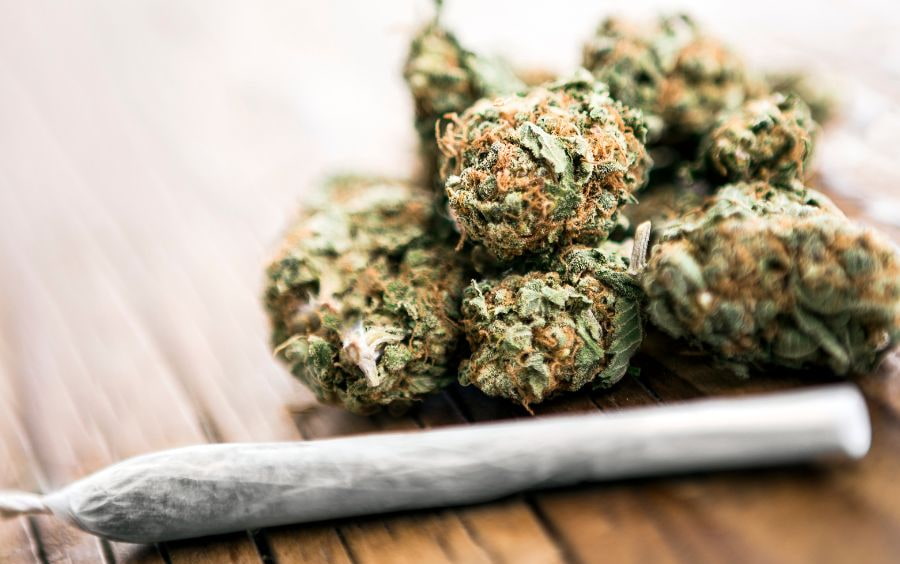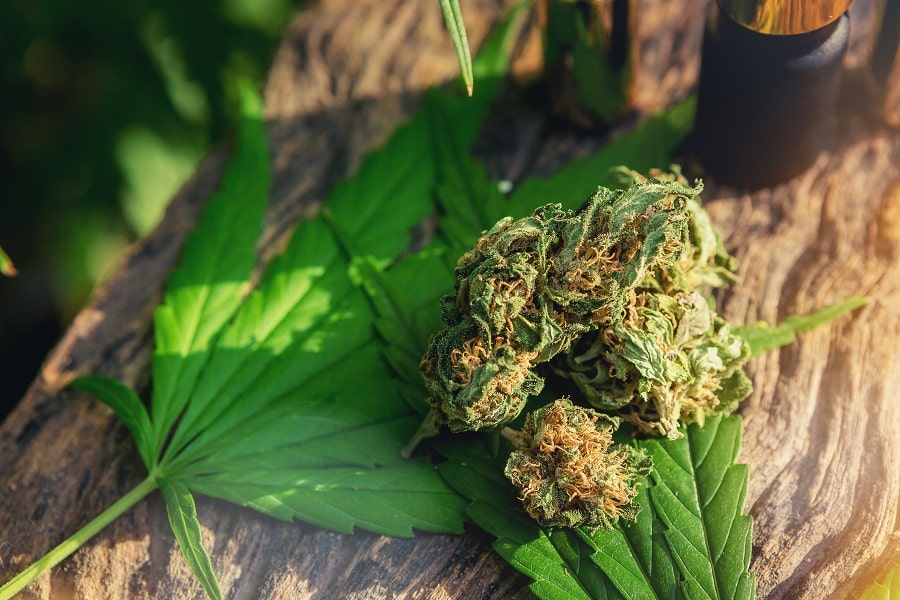It’s no news that cannabis is deeply rooted in controversies. It has been the topic of debate for years. However, the faction that argues for the legalization of cannabis has won in not less than 10 countries worldwide, Canada inclusive.
In 2018, Canada became the first G7 country and the second country to legalize cannabis in the world, after Uruguay.
What prompted this trailblazing decision? Which events led up to this historic win for marijuana?
We’ll answer these questions and more in this article. Also, we’ll examine the impact that marijuana prohibition had on Canadian society and the reasons behind the push for legalization.
Let’s journey down memory lane to examine the Canadian history of cannabis.
Pre-prohibition Use of Marijuana in Canada
The first Cannabis plant in Canada was planted by Lois Herbert, a botanist, in the 1600s. By the 1800s, it had become a famous medicinal herb.
In the early 1900s, cannabis started serving recreational purposes, particularly among immigrant communities from China and India. It was often smoked or brewed in tea.
Following this development, Canada’s government passed the Narcotic Drug Act Amendment Bill in 1923. This marked the beginning of marijuana regulation in the country. The possession and distribution of cannabis became illegal. However, this came after the Opium and Drug Act of 1911.
Why this sudden criminalization of marijuana?
The popular belief is that the fear that its use could lead to moral degeneration and drug addiction drove the prohibition. Nevertheless, no one knows for sure what the exact reason was.
Despite this prohibition, some Canadians continued using marijuana. And the first Cannabis arrest didn’t happen until 1937, over 10 years after the first ban.
Subsequently, it was associated with counterculture movements, particularly in the 1960s and 70s. This didn’t affect the illegality of marijuana; those caught with the drug could face serious consequences.
The Beginnings of Cannabis Prohibition in Canada
A moral panic over drug use could have primarily driven the push for marijuana prohibition in Canada. In the early 20th century, many believed that drugs like marijuana threatened society and that the ban would protect the public.

However, the criminalization of marijuana was also tied to racist attitudes toward Indigenous communities and immigrant populations. That’s because they were the primary users of the drug.
The 1960S and 70S: The Rise of Cannabis Culture in Canada
The 1960s and 70s were a time of significant social and cultural change in Canada. The country was undergoing remarkable political and economic shifts. Thus, marijuana use was seen by many as a way to rebel against traditional values and norms.
In 1996, things took a slightly different turn. British Columbia province became Canada’s first jurisdiction to legalize medical cannabis. The HIV/AIDS epidemic influenced this decision. This change led to increased demand for marijuana as a treatment for symptoms like nausea and loss of appetite.
In the early 2000s, the debate over marijuana legalization began to gain momentum in Canada. Some argued that the criminalization of marijuana was unnecessary. This school of thought believed the government should decriminalize cannabis or legalize it for medical use.
Others pointed to the social and economic costs of marijuana prohibition. This debate capitalized on the high cost of enforcement and the impact that criminalization had on marginalized communities.
In 2001, Canada became one of the first countries to legalize medical marijuana. Under the new law, people with certain medical conditions could apply for a medical license to use marijuana for medicinal purposes.
However, the law was limited in scope, and only a few Canadians could access medical marijuana. But this didn’t change the fact that the anti-marijuana movement was caving.
Read more about the history of medical marijuana below.
Medical Legalization History In Canada
Cannabis legalization in Canada can be traced back to the early 2000s. A growing body of evidence suggested that marijuana could effectively treat various medical conditions.
This evidence led to a series of legal changes that made it easier for patients to access the plant for medical purposes.
Early Medical Legalization Efforts
In 1996, the province of British Columbia legalized medical cannabis. However, the legalization of medical cannabis in British Columbia was not recognized by the federal government.
Therefore, it remained illegal for patients to possess and use cannabis for medical purposes under federal law.
In 2000, the case of Parker v. Canada challenged the constitutionality of Canada’s drug laws, arguing that they violated patients’ rights to life, liberty, and security. The plaintiff was Terry Parker, who used cannabis to treat his epilepsy. Sadly, the Ontario Court of Appeal ruled that the possession of marijuana was still unconstitutional, even in his case.
Finally, the silver lining appeared in the sky for people rooting for medical marijuana.
In 2001, the Canadian government introduced the Marijuana Medical Access Regulations (MMAR). This act granted legal access to patients with a medical need to use cannabis for medical purposes with a doctor’s authorization.
Patients could also apply to Health Canada for a license to grow cannabis or designate someone else.
Changes to Medical Cannabis Regulations
In 2013, the Canadian government introduced the Marijuana for Medical Purposes Regulations (MMPR), which replaced the MMAR. This new regulation allowed patients to purchase cannabis from licensed producers rather than grow their own or designate someone else to grow it. Thus, with MMAR, licensed producers can distribute and sell cannabis oil to licensed patients.
Also, the MMPR established a rigorous licensing process for cannabis producers. It came with strict quality control standards to ensure patients receive safe and effective products.
It’s important to note that the MMPR was enacted due to some of the criticisms of the MMAR. And the concerns about the safety and quality of medical cannabis.
In 2016, the Canadian government announced its intention to introduce new regulations for medical cannabis. This regulation is the Access to Cannabis for Medical Purposes Regulation (ACMPR). It addresses some of the concerns raised by patients and stakeholders. For instance, the high cost of medical cannabis in Canada and the limited availability of certain products.
In 2018, Cannabis Act replaced ACMPR. It legalized the possession and sale of cannabis for recreational use. However, medical cannabis continues to be available for patients with medical needs, and the regulatory framework for medical cannabis remains in place.
Legalization of Recreational Cannabis in Canada

Canada became the second country to legalize recreational marijuana in 2018. Under this act, adults over 18 can legally purchase and use marijuana for non-medical purposes.
Marijuana legalization represents a progressive step for Canadian society and a recognition of the changing attitudes towards the drug.
However, the issue of legalizing cannabis has been controversial. Some have raised concerns about the impact that marijuana use could have on public health and safety, particularly for young people.
Others have criticized the government’s approach to legalization, arguing that it hasn’t done enough to address the social and economic costs of marijuana prohibition.
Current Laws and Regulations Surrounding Marijuana in Canada
Recreational Marijuana
Cannabis Act came into effect and legalized cannabis possession. Hence, adults over 18 (or 19 in some provinces) may consume marijuana for recreational purposes. The Act also established regulations for producing, distributing, and selling marijuana to create a safe and legal market for the drug.
Under the Act, individuals may possess up to 30 grams of dried cannabis or its equivalent in public. And they may grow up to four plants per household for personal use. However, there are restrictions on place and mode of consumption and selling. The act also restricts legal access for minors.
Medical Marijuana
Medical marijuana has been legal in Canada since 2001, and regulations are available to ensure its safe and effective use. Patients with a medical need can obtain a prescription from a healthcare practitioner and purchase marijuana from a licensed producer.
The Access to Cannabis for Medical Purposes Regulations (ACMPR) governs the use of medical marijuana. It also provided rules around production, distribution, and possession.
Medical marijuana is subject to the same quality and safety standards as recreational marijuana, with restrictions on the place of consumption.
Impaired Driving
One of the biggest concerns surrounding marijuana legalization is the risk of impaired driving. In response, Canada has introduced new impaired driving laws that limit the amount of THC (the psychoactive component of marijuana) that drivers can have in their system.
Under the new regulations, drivers with more than 2 nanograms but less than 5 nanograms of THC per milliliter of blood will get fines and license suspensions.
However, people with more than 5 nanograms can face criminal penalties. Police also got new tools to detect impaired driving, such as oral fluid testing devices.
Overall, the laws and regulations surrounding marijuana in Canada strike a balance between individual freedom and public safety.
The country keeps navigating the complexities of marijuana legalization. But it’s now more vital to monitor and adapt these regulations to ensure they remain effective and current.
The Impact of Marijuana Legalization on Canadian Society
While the full effects of legalization are still being studied and debated, there are several ways in which it has already changed Canadian society.
Public Health and Safety
One of the main goals of cannabis legalization was to reduce the harm associated with illegal drug use. It sought to provide a safer and more regulated environment for producing and consuming marijuana.
Legalization has led to new standards for the quality and safety of cannabis products. It has also increased access to harm-reduction services like education and treatment.
However, there are still concerns that legalization could lead to an increase in the use of cannabis, particularly among young people.
There have been reports of increased emergency room visits and instances of impaired driving related to cannabis use since legalization.
But it’s still too early to draw definitive conclusions about the impact of legalization on public health and safety.
Economy
The legalization of cannabis has also significantly affected the Canadian economy. It has created new industries and job opportunities for cannabis cultivation, processing, and retail. Legalization generates tax revenue for the government, which funds public services like healthcare, education, and law enforcement.
However, there have also been challenges associated with the economic impact of marijuana’s legal use. That’s especially true regarding issues like pricing and supply. The legal cannabis industry is still competing with the illegal market, which can offer lower prices and a wider range of products.
Criminal Justice System
Prior to legalization, marijuana was a significant driver of drug-related arrests and convictions in Canada. Decriminalization has significantly reduced the number of cannabis-related charges, freeing up police and court resources to focus on more serious crimes.
It has also had implications for those previously convicted of cannabis-related offenses. The Canadian government has introduced measures to provide pardons for some marijuana-related violations.
But there have been criticisms that these measures don’t go far enough to address the harms of the war on drugs.
Conclusion: Reflecting on the Canadian History of Marijuana
The Canadian history of marijuana is complex and often controversial. From its early use by Indigenous communities to the legalization of recreational use, marijuana has been a part of Canadian society for centuries.
Decriminalizing marijuana is an important step forward for Canadian society, but it is not without its challenges.
It’s vital to remain mindful of the potential risks and benefits of legalization and the safe use of drugs.
